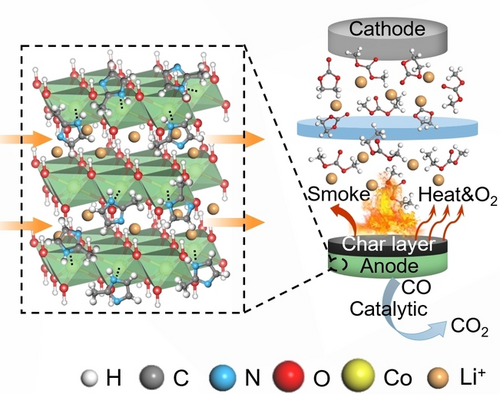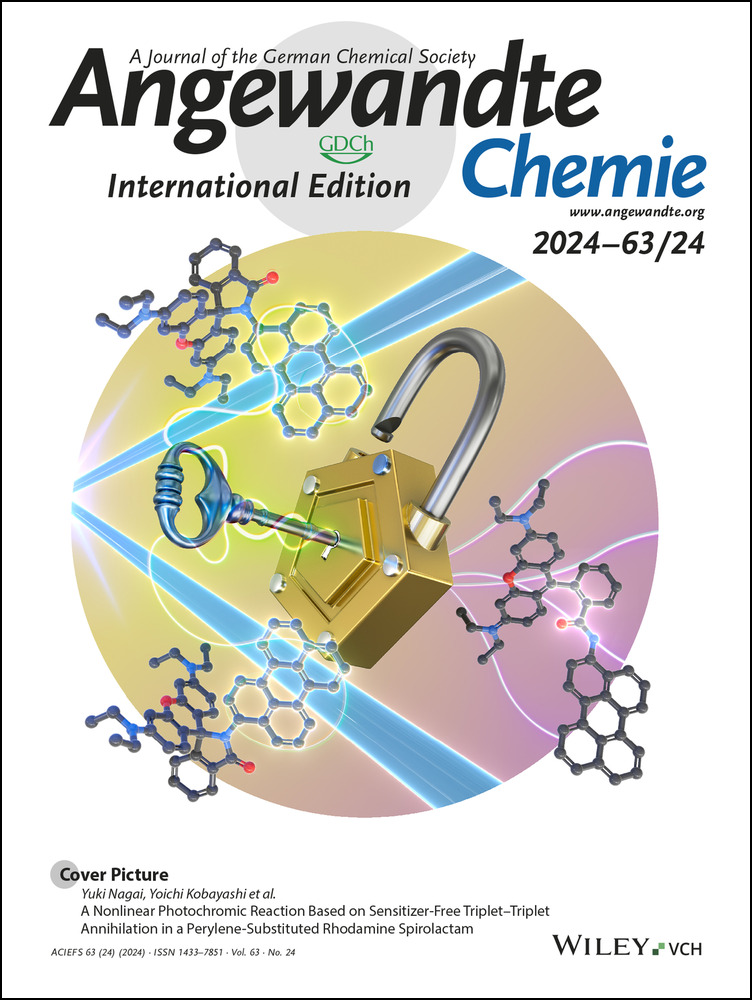Imidazole-Intercalated Cobalt Hydroxide Enabling the Li+ Desolvation/Diffusion Reaction and Flame Retardant Catalytic Dynamics for Lithium Ion Batteries
Graphical Abstract
A strategy of intercalated small organic molecules in the anode material was proposed to enhance the capacity and cycle stability of lithium-ion batteries. The introduction of imidazole molecules provides more binding sites for lithium ions, which also can participate in the generation of SEI and maintain the stability of cobalt hydroxide structure. Moreover, the anode material has the function of smoke suppression and toxicity reduction when thermal runaway occurs, which can improve the thermal safety of lithium-ion batteries.
Abstract
Lithium-ion batteries have found extensive applications due to their high energy density and low self-discharge rates, spanning from compact consumer electronics to large-scale energy storage facilities. Despite their widespread use, challenges such as inherent capacity degradation and the potential for thermal runaway hinder sustainable development. In this study, we introduce a unique approach to synthesize anode materials for lithium-ion batteries, specifically imidazole-intercalated cobalt hydroxide. This innovative material significantly enhances the Li+ desolvation/diffusion reaction and flame-retardant dynamics through complexing and catalytic synergetic effects. The lithium-ion batteries incorporating these materials demonstrate exceptional performance, boasting an impressive capacity retention of 997.91 mAh g−1 after 500 cycles. This achievement can be attributed to the optimization of the solid electrolyte interphase (SEI) interface engineering, effectively mitigating anode degradation and minimizing electrolyte consumption. Experimental and theoretical calculations validate these improvements. Importantly, imidazole intercalated Co(OH)2 (MI−Co(OH)2) exhibits a remarkable catalytic effect on electrolyte carbonization and the conversion of CO to CO2. This dual action suppresses smoke and reduces toxicity significantly. The presented work introduces a novel approach to realizing high-performance and safe lithium-ion batteries, addressing key challenges in the pursuit of sustainable energy solutions.
Conflict of interests
The authors declare no conflict of interest.
Open Research
Data Availability Statement
The data that support the findings of this study are available from the corresponding author upon reasonable request.





